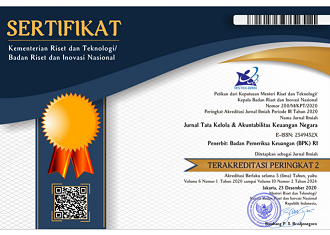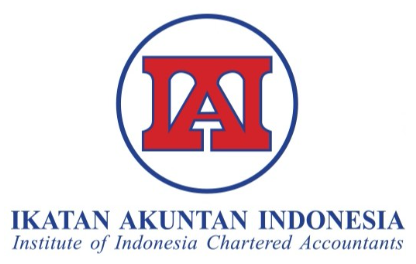Accredited
Submissions
Submission Preparation Checklist
As part of the submission process, authors are required to check off their submission's compliance with all of the following items, and submissions may be returned to authors that do not adhere to these guidelines.- The article hasn't been published.
-
The article does not contain any plagiarism elements, including self-plagiarism.
- The article adheres to the stylistic and bibliographic requirements outlined in the Author Guidelines and Template on the JTAKEN website.
- The author has proofread the article before submitting.
Author Guidelines
The Article General Guidelines
- The article is an authentic research result that has NEVER been published in any other publication media or publishing houses, either in printed or electronic form.
- The article does not contain any elements of plagiarism, including self-plagiarism. The editorial board will directly reject the article that indicates plagiarism.
- The submission and publication processes are free, without additional fees.
- The article that has been written under the guidelines of JTAKEN (in MS Word format or using an article template) shall be submitted through the Online Submission System using the Open Journal System (OJS) on the JTAKEN e-journal portal (https://jurnal.bpk.go.id/index.php/TAKEN). Then, register as the author in the Register.
- The article template can be downloaded and available in MS Word (.docx).
- The article inappropriate with the JTAKEN writing guidelines will be returned to the author before the review.
- The article structure includes the title, authors, abstract and keywords, introduction, research method, result and discussion, conclusion, references, and appendices/acknowledgments.
- The article should be written in English. Authors for whom English is not their native language are encouraged to have their articles checked before submission for grammar and clarity. The article should contain 6000-8000 words, including pictures and tables.
- The body of the article is written as follows:
-
- The article is written on A4-sized papers, with custom margins as follows: top 2cm, right 2cm, left 2.5cm, and bottom 2.5cm.
- Using 11 points, Georgia, exactly 15 points line spacing, before 8 points and after 8 points.
- Foreign terms should be written in italics.
- Abbreviations should be followed with an explanation when the first time is mentioned, except for the unit of measurement.
- The table is placed left-aligned. The table title is placed above the table and is left-aligned, with 10 points Calibri and exactly 15 points line spacing. Table content using 9-10 points Calibri, exactly 12 points line spacing, 0 points spacing before and after. The source and information are below the table, left aligned, italic, 9 points Calibri. The number of tables is identified using Arabic numerals.
- The figure can be a graph, matrix, picture, diagram, and others placed centered on the page. The figure title is written below the figure using 10-11 points Calibri, exactly 15 points line spacing, and left-aligned. The Figure title and number are written in bold, while the content is in a normal format. The number of figures is identified using Arabic numerals. Source and information are placed below the figure title, left aligned, italic, and 9 points Calibri. The figure should be in black and white with extension .jpg or .tif. If it is made in color to explain the meaning, it should provide the respective high-resolution figure minimum of 300 dpi.
- Guidelines for Heading:
- Heading level 1: UPPERCASE, left-aligned, bold, 18 points Calibri, exactly 15 points line spacing, 8 points spacing before and after.
- Heading level 2: Capitalize Each Word, left-aligned, bold, 11 points Georgia, exactly 15 points line spacing, 8 points spacing before and after.
- Heading level 3: Sentence Case, left-aligned, bold, italic, 11 points Georgia, exactly 15 points line spacing, 8 points spacing before and after.
- Heading level 4 is not recommended.
10. Please fill in your CV and Copyright Transfer Agreement Form, then attach it when submitting the article.
The Article Body Guidelines
The article's title: Briefly describe the substance of the article in no more than 15 words. It has to be pinpointed with the issues discussed. The article title does not contain any uncommon abbreviations. The main ideas should be written first and followed then by their explanations. The title uses 18 points Calibri, Sentence Case, bold, centered, exactly 16 points line spacing, 0 points before and after.
Author's names and institutions. The author's name should be accompanied by the author's institution, the institution's address (city and country), and email addresses, without any academic titles or job titles.
Abstract: An abstract consists of no more than 200 words, using 10-point Georgia and single-line spacing. The abstract should concisely inform the reader about:
Main Purpose - The research objective is described in 1 sentence.
Method - This part contains a description of the research analysis tools. This part is described in 2 sentences.
Main Findings - This part contains the main phenomena that cause the test results (if the research is quantitative) or the meaning captured by the authors from in-depth interviews or literature reviews (if the research is qualitative). This part consists of 3 sentences.
Conclusion - This part also contains the test results' conclusions, theory, and practical implications (solutions). This part consists of 2 sentences.
Novelty - This part contains the novelty of the research when compared to other studies. This section is described in 1 sentence.
Keywords: List three to five pertinent keywords specific to the article yet reasonably common within the subject discipline; use lowercase except for names, and separate with a semicolon (;).
Introduction: The introduction should contain (shortly and consecutively) a general background, objective, literature review (state of the art) as the basis of the brand new research question, statements of the brand new scientific article, main research problems, and the hypothesis (optional). The introduction contains previous similar research, the differences with the present research, and the contributions given.
Research Method: In general, the research method includes the framework, data collection method, data analysis method, location, and research time. The research method describes the type, data source, and variable definition. The method provides detailed descriptions so that other authors can assess and duplicate the procedure.
Result and Discussion: This part consists of the research results and how they are discussed. Research results can be presented in a table or figure, followed by information that is easy to understand. The discussion section states that there is a relation between results and basic concepts or the research hypothesis so that it can be seen in its suitability and contradiction with other research. The discussion also explains the limitation of the research and its implications theoretically and by the application.
Conclusion: This is the final part containing conclusions and suggestions. The conclusions will be the answers to the hypothesis, the research purpose, and the research findings. The suggestion is based on the analysis result, and the conclusion is also associated with further ideas from the research.
References: The author should cite the publications on which the article's work is based. Cite only items that the author has read. Primary references should be ±80% of all references cited. References should be taken from the last ten years. All references should be written in the American Psychological Association (APA) style and in alphabetical order. The references should use reference management software such as Mendeley, EndNote, Zotero, etc.
Appendices/Acknowledgements: Appendix (es) can be included if necessary. The author can only write essential acknowledgments for those who have contributed to the research.
The Editorial Board reserves the right to amend and refine the article as long as it does not alter the substance of the article.
Copyright Notice

Jurnal Tata Kelola dan Akuntabilitas Keuangan Negara is licensed under
a Creative Commons Attribution-ShareAlike 4.0 International License




















